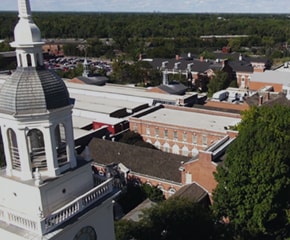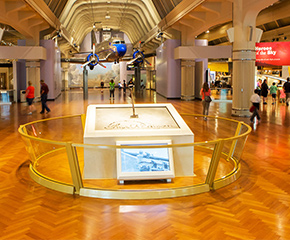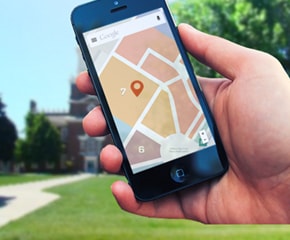
Behind the Scenes at
Driving America
In building a new exhibit all about the automobile, our curators were faced with a challenge: how could we create an experience that appeals to both car enthusiasts and casual drivers alike? As a result, Driving America flips the script on how we look at our day-to-day transportation. With more than 100 vehicles and 20 interactive touchscreens containing activities, video interviews, and artifact information and images, the exhibit is all about the visitor. According to Patricia Mooradian, President of The Henry Ford, “We want people to walk away from this experience thinking about cars, culture and themselves in new, unexpected ways.”
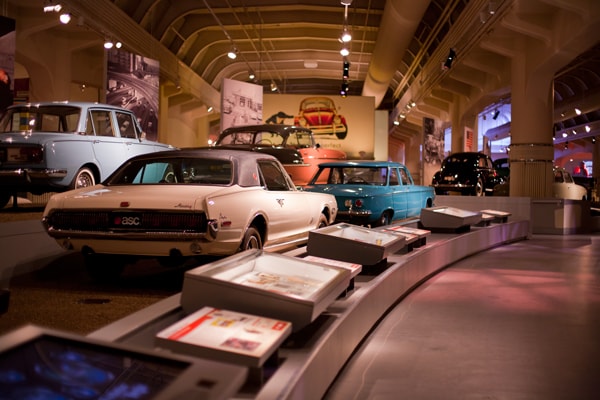
Cars Through the Years
By displaying generations of cars, Driving America explores how Americans have changed the automobile as we’ve progressed over the last century. The exhibit is not so much about the automobile itself, but about our relationship with it,” explains Curator of Transportation Matt Anderson. “We try to answer two questions: 1.) How has the car changed to fit our needs, and 2.) How have we changed to fit the car’s needs?”
Our curators carefully chose a collection of cars that reflect changes generations in the making. The first hybrid car was introduced in 1901, but it wasn’t until Toyota released the Prius in 2002 that the hybrid really took off—why? Our preferences changed—we began to value fuel economy over speed, safety over flashy looks. Like other cars before it, the Prius made its own statement, in this case an ecological one: “I’m doing my part for the environment. Are you?” As you gaze at our vast collection of automobiles, our curators invite you to question the world around you. Former Senior Curator of Transportation Bob Casey explained, “To each visitor, we’re saying, ‘What do you think a car should be? Which direction should we be going in the future?’”
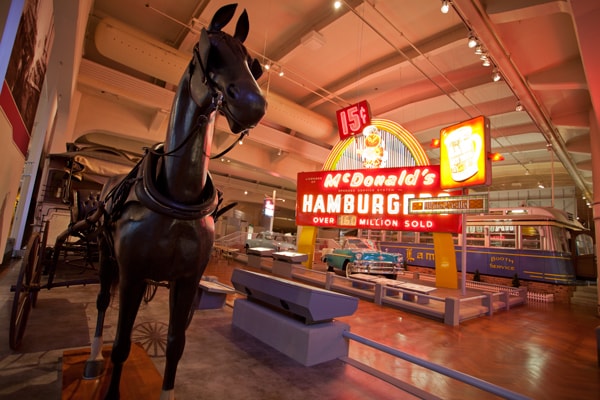
Objects with Purpose
Driving America is a testament to the fact that everyday objects can tell powerful stories. According to Mooradian, “Driving America makes people stop and think about the choices in transportation made throughout history and those innovations that shape our landscape today.”
Indeed, the exhibit features sights of transformation sparked by the rise of the automobile. There are roadside signs for White Castle, A&W, and McDonald’s, keys for a service station restroom, a 1977 radar detector, and a motel’s Gideon Bible—cultural icons that that connect the automobile to everyday life. Driving America examines cars not just from the driver’s seat but through the objects that rose behind the exhaust.
Does the smell of leather and gasoline evoke memories of your first kiss at the drive-in movie, hours spent changing the muffler of your Ford Falcon, cross-country family road trips where you listened to the same cassette tape over and over again for 12 hours? Whether you’re a car buff or a Sunday driver, we want your story, your connection with tire, tread and leather to come alive.
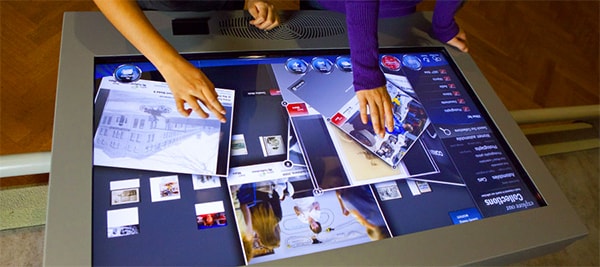
Interactive Exhibits
Interactive touch screens engage you during your visit, connecting you with the artifacts. “We wanted to develop content around what the visitor was seeing,” said Mooradian. “All of our interactives are designed to be learning experiences and activities that utilize artifacts from The Henry Ford’s extensive collection.” An instructional record created during the citizens band (CB) radio craze teaches visitors how to “talk like a trucker”—don’t worry, it’s family friendly! An interactive quiz matches you with cars on display, based on your personality.
Driving America examines our relationship with technology, modernity and progress, and, by exploring our past, prepares us for the challenges of the future. In Mooradian’s words, “We don’t just display the vehicles, we bring the past forward by immersing our visitors in the stories of ingenuity, resourcefulness and innovation that have made America the great country it is today.”
